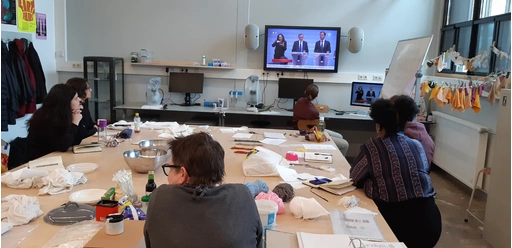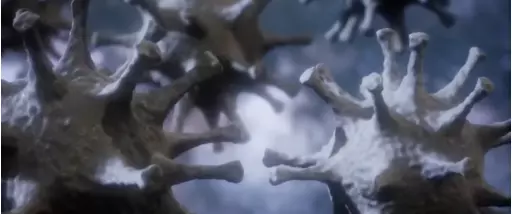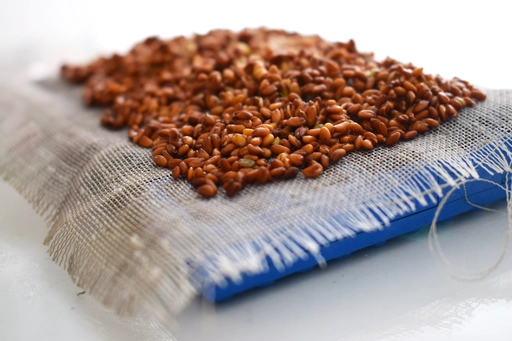
Living Matters online exhibition
storytelling by AKI Bio Matters research on the precarity that has always been now
blog by Agnieszka Anna Wołodźko – 24 jun. 2020“Perhaps that is what the role of an artist relies on―giving a foretaste of something that could exist, and thus causing it to become imaginable. And being imagined is the first stage of existence.” 1)
What is storytelling, or better yet, what does storytelling do? To tell a story, imagine it, is not so much a reflection upon reality and its representation, but already a moulding and shaping process that often brings the unspoken into existence. We tend to abstract ourselves from that which is unseen and unuttered due to assumed ideologies, personal negligence and the comfort of habits. Therefore, in the moment of telling a story, we can make the intangible tangible, we materialise that which seemed to be immaterial by bringing it into the sphere of importance. Today, thus, in the time of the virus, what seems to be at stake is how to keep on telling stories so that they are not subsumed into one narrative of risk management, driven and governed by privileges, ideologies and abuses of power. In other words, at a time of many crises, the way in which stories are told, the choice of who tells those stories and what kind of stories are heard becomes a matter of not only survival, but also thriving.
During classes on how to work with living images, within the AKI Biomatters artistic research programme, students have been exploring ecological and alchemistic questions such as: how can we create in the time of ecological disasters? What is the role of art and design when we challenge anthropocentrism? Can art be autonomous and irrelevant in times of environmental crisis? How can we create with mess and trouble rather than ignoring them? And while I was discussing the possibility of imagining and, therefore, creating different futures with the students, the singularity of the virus has proven that the future has always been now.
During classes on how to work with living images, within the AKI Biomatters artistic research programme, students have been exploring ecological and alchemistic questions such as: how can we create in the time of ecological disasters? What is the role of art and design when we challenge anthropocentrism? Can art be autonomous and irrelevant in times of environmental crisis? How can we create with mess and trouble rather than ignoring them? And while I was discussing the possibility of imagining and, therefore, creating different futures with the students, the singularity of the virus has proven that the future has always been now.

With classes moved to online platforms, we faced problems on how to create and function within this new learning environment. In the precarity of students’ struggle to find their way back home across national and continental borders, with a scarcity of materials, with work moved from the safety and access of the biolab to the kitchen at home, with the risks and illegality of being outside your home and among people, the questions we had been asking so far became overwhelmingly urgent. The assumption that there is one approach, one correct response that would fix the problems of medical, ecological, economic and social precarity we all found ourselves to be conditioned by quickly evaporated, making us gradually aware that we do not know how to respond to the difficulty and complexity of problems.
Each video chat with my students thus quickly turned into a session of sharing experiences and coping strategies; each lesson began and ended with new stories and narratives of worries and hopes. It became obvious that this health crisis we are in is a crisis of institutions, and that the exposure of political governance, economic and social injustice influences the individual capacity to care. Through finding possibilities to think and practice, we witnessed how each of our experiences as students and teachers, as citizens and bodies, cannot be subsumed into one narrative, but that we need to maintain and develop sensitivity in order to respond to the various conditions and accompanying problems we all found ourselves to be enclosed by. In this way, rather than striving for one survival strategy, we all became enveloped by the need to find new ways to create and thrive in situations of precarity.
Instead of results - which are characteristic to the habitually defined nature of an art exhibition - we are sharing with you the sphere of the complexity and intimacy of artistic research in the time of the pandemic. We are weaving stories here that were driven by the existential tension and mutations of questions one encounters in the viral precarity and which conditioned our artistic and design practice. Please note, in that which is “non” there is no negation, but rather relations of pause and wonder, imagination of becoming otherwise. This is a glimpse into the process of the students’ experiments outside our biolab. This is again an attempt to tell stories anew with care for the porosity and dynamics of life and living bodies. In this way, we hope to map the conditions of how to tell stories that will allow for us to mutate again and again, anew.
Non-curator: Agnieszka Anna Wołodźko
Each video chat with my students thus quickly turned into a session of sharing experiences and coping strategies; each lesson began and ended with new stories and narratives of worries and hopes. It became obvious that this health crisis we are in is a crisis of institutions, and that the exposure of political governance, economic and social injustice influences the individual capacity to care. Through finding possibilities to think and practice, we witnessed how each of our experiences as students and teachers, as citizens and bodies, cannot be subsumed into one narrative, but that we need to maintain and develop sensitivity in order to respond to the various conditions and accompanying problems we all found ourselves to be enclosed by. In this way, rather than striving for one survival strategy, we all became enveloped by the need to find new ways to create and thrive in situations of precarity.
Instead of results - which are characteristic to the habitually defined nature of an art exhibition - we are sharing with you the sphere of the complexity and intimacy of artistic research in the time of the pandemic. We are weaving stories here that were driven by the existential tension and mutations of questions one encounters in the viral precarity and which conditioned our artistic and design practice. Please note, in that which is “non” there is no negation, but rather relations of pause and wonder, imagination of becoming otherwise. This is a glimpse into the process of the students’ experiments outside our biolab. This is again an attempt to tell stories anew with care for the porosity and dynamics of life and living bodies. In this way, we hope to map the conditions of how to tell stories that will allow for us to mutate again and again, anew.
Non-curator: Agnieszka Anna Wołodźko
Notes
1) Olga Tokarczuk, “The Tender Narrator,” ‘The Nobel Prize in Literature 2018’, NobelPrize.org, accessed 10 December 2019, www.nobelprize.org/prizes/literature/2018/tokarczuk/104871-lecture-english/?fbclid=IwAR3VKZsPXLK-YfcMOm-4gXMHhTXSJ-_89heaal6ULICqJd8JTbpIzz09J2A.
AKI BIO MATTERs is an artistic research programme that focuses on working with new biomaterials where art and design meet life science, philosophy, politics, ecology, bioethics, and DIY. It is led by Dr. Agnieszka Anna Wołodźko aki.artez.nl/en/highlight/aki-research/
The present programme is part of the minor Living Images, in collaboration with Patrick Mangnus, Aalt van de Glind and the Artez Studium Generale film series How on Earth?
The present programme is part of the minor Living Images, in collaboration with Patrick Mangnus, Aalt van de Glind and the Artez Studium Generale film series How on Earth?
related content
refered to from:
blog – 24 jun. 2020
A story by Celile Demir, who asks: What does it mean to be an organism?
Part of Living Matters non-exhibition
blog – 24 jun. 2020
A story of Dawoon Kim, who asks: What is the new biological me?
Part of Living Matters non-exhibition
blog – 24 jun. 2020
A story by Eric Bari, who asks: How can we rethink/re-use our wastage to create resources to gain knowledge, as well as understanding the value of our surroundings?
Part of Living Matters non-exhibition
blog – 24 jun. 2020
A story by Talitha Fruneaux, who asks: Is it OK to play with life?
Part of Living Matters non-exhibition
blog – 24 jun. 2020
A story by Anivia Beylard
Part of Living Matters non-exhibition
blog – 24 jun. 2020
A story by Suzan Stemerdink, who asks: How to pay attention to the plant root system?
Part of Living Matters non-exhibition
blog – 24 jun. 2020






